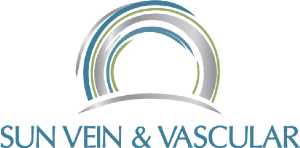FAQs
Sun Vein & Vascular
Have a vascular and cosmetic treatment-related question? We have the answer.
Check out these FAQs and give us a call today for more information!
Do you have consultations to determine what treatment is required?
Yes, this is the first step to tailoring a treatment plan that is right for you. During your initial visit, the affected areas will be examined to determine if a Doppler Duplex Ultrasound Scan will be necessary. Once the appropriate treatments have been determined, as a vascular surgeon in Dallas, TX, we will review the costs and other relevant details with you to ensure you are fully informed.
Should I see a doctor about varicose veins?
You should schedule a consultation about varicose veins with a vascular surgeon in Dallas, TX if:
- The vein has become swollen, red, or very tender or warm to the touch
- There are sores or a rash on the leg or near the ankle
- The skin on the ankle and calf becomes thick and changes color
- One of the varicose veins begins to bleed
- Your leg symptoms are interfering with daily activities
- The appearance of the veins is causing you distress
If you're having pain, even if it's just a dull ache, don't hesitate to get help. Also, even if you don't need to see a doctor about your varicose veins, you should take steps to keep them from getting worse. (See: How can I prevent varicose veins and spider veins?)
How are varicose veins diagnosed?
A vascular surgeon in Dallas, TX may diagnose your varicose veins based on a physical exam. Your doctor will look at your legs while you're standing or sitting with your legs dangling. He or she may ask you about your symptoms, including any pain you have. Sometimes, you may have other tests to determine the problem's extent and to rule out other disorders. You might have an ultrasound, which is used to see the veins' structure, check the blood flow in your veins, and look for blood clots. This test uses sound waves to create pictures of structures in your body.
Why do I need to get an ultrasound exam?
The first step in finding the right treatment for damaged veins is finding its source. A Doppler Duplex Ultrasound Scan provides a visual window, revealing the diseased, refluxing veins beneath the skin's surface. With this diagnostic capability, as a vascular surgeon in Dallas, TX, we can pinpoint the exact cause of varicose veins and customize a treatment plan for each patient and each damaged vein. Because the problem is dealt with at its source, the treatments are quicker, more effective, and less painful than traditional methods, such as vein stripping. The ultrasound scan is especially important if you have had previous vein treatment.
Can the treatment be done during pregnancy? Or how soon after if not during?
No. Even though, according to the NIH, about 40% of women develop varicose veins during pregnancy, we don't recommend treating them during pregnancy. As a vascular surgeon in Dallas, TX, we usually recommend that you wait two months after delivery.
Will insurance cover my treatments?
Insurance will reimburse a high percentage of the treatment cost if there is a documented venous insufficiency problem with associated symptoms. As a vascular surgeon in Dallas, TX, we can provide the diagnostic and procedure codes for pre-certification by your insurance company. It is important to note that each insurance company reimburses different amounts for these treatments. Here at Sun Vein & Vascular, we will work with you to help you understand your coverage.
How do I know if I have Lymphedema or Lipedema?
Lipedema is a painful condition in the fat of the body and is not responsive to diet and exercise. Lymphedema is persistent swelling that is worsened by sitting, travel, and diminished activity. If you're unsure of which you're afflicted with, visit a vascular surgeon in Dallas, TX today.

Share On: